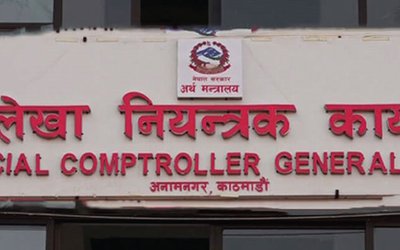It is not surprising to see the news in the national media about the disruption of flights due to technical problems on the runway or the aircraft pressure on it.
The flight diversions cost a huge amount of money as well as eroding the credibility of Nepal’s only international airport. As a gateway to most of the trekking centers and places of historical and cultural importance, Kathmandu remains a major tourist destination.
With big earthquakes hitting the country a year back, Tribhuwan International Airport proved to be the major hub for international rescue missions to operate at the time of disaster. It still is such a hub.
Although the Asian Development Bank (ADB) has been supporting expansion and improvement of the Tribhuwan International Airport, whose role in Nepal’s economic development has been important, the project supposed to be completed this year is yet to finish 16 percent of its work as the contractor has not taken any work in the last one and a half year.
Tika Limbu, Unit Head of Portfolio Management Division of ADB Resident Mission in Kathmandu, presented an overview at the Nepal Portfolio 2016 Tripartite Portfolio Review Meeting.
However, airport extension and expansion program is moving at a snail's pace. As the Spanish Contractor San Hose has stopped working following the earthquake, it is still uncertain when it will resume the work. The contractor has also filed a case for compensation of over Rs. 1.5 billion with the Civil Aviation Authority. The compensation amount is more than the work it has completed. The contractor has been invited for discussions to resume the work. If they ignore the suggestions, the process of termination of contract may begin.
This is not the first project in limbo. Other ADB-supported projects are also making a slow progress. The records show: "Out of 23 loans, 21 grants [32 Projects] with $1.7 billion. The $977.7 million [56%] contracted. $584.9 million [34%] disbursed and 20 ongoing TAs $33.6 million."
“ADB places highest priority in accelerating development expenditure and delivery of results. TPRM provides an excellent opportunity to discuss and resolve project specific and generic issues that are hindering timely project implementation,” said K.Yakoyama, Head of Nepal Resident Mission.
Supporting projects ranging from hydropower to livelihood, airport to road and transmission line to agriculture and irrigation, Asian Development Bank has been a major multi-lateral development partner of Nepal.
“This is a fact that Nepal is unable to increase the capital expenditure including the foreign resources in the last few years with several reasons. I will assure ADB that the situation will improve in the coming days," said Shanta Raj Subedi, finance secretary. "We will take all necessary measures to make tangible progress in the expenditure."
With the three governments in just a matter of year, Nepal’s political instability is damaging the overall economic growth.
This year marks the 50th anniversary of ADB’s partnership with Nepal. "We have had many tangible results, such as major hydropower plants such as Kali Gandaki A and Khimti, roads and bridges, and water, including the Melamchi water that will come soon. But Nepal still remains a low developing country, and calls for much faster and bigger investments in physical and human capital, with higher efficiency and quality."
With ADB, the greatest challenge remains to be accelerating the implementation of the ongoing projects. As of 30 Sept 2016, ADB’s outstanding commitments amount to $1.73 billion over 33 investment projects, of which $1.15 billion (66%) is still undisbursed. This is equivalent to almost 6% of Nepal’s GDP.
“As to 2016 we set ambitious targets with the executing agencies—with some $400M contract award (CA) and about $240M disbursement. The corresponding CA and disbursement ratios are 30% and 15%, respectively. Achieving these targets is very important to enhance the portfolio performance, and to secure higher future resource allocation to Nepal,” notes K. Yokoyama, Country Director Nepal Resident Mission.
“Looking at the 2016 performance so far, I would first like to appreciate the serious efforts made by the executing and implementing agencies. By the end of September 2016, Nepal projects have achieved $231M CA and $131M disbursements. These are already higher than the historically highest ever achieved in Nepal in ADB-assisted projects. We particularly commend energy project staff for delivering high CA, and urban project staff for delivering high CA and disbursement,” said Yokoyama.
“Having said this, we are still very far from becoming complacent. We have substantial gaps against 2016 annual targets. Specifically, $169M for CA (40% of target) and $109M disbursement (44% of target) must be achieved during the only two months remaining in 2016. In our view, overall portfolio performance of 2016 is deemed satisfactory thanks to the strong contribution of good performing projects. But there are also another set of projects that have continuously suffered from the conventional problems."
- TANAHU HYDROPOWER PROEJCT: A Significant Achievement
- Apr 15, 2024
- AMBASSADOR HANAN GODAR: Sharing Pain With A Nepali Family
- Mar 30, 2024
- VISIT OF KfW AND EIB TO NEPAL : Mission Matters
- Mar 25, 2024
- NEPAL BRITAIN SOCIETY: Pratima Pande's Leadership
- Mar 24, 2024
- NEPAL ARMY DAY: Time To Recall Glory
- Mar 15, 2024
















